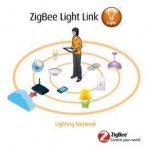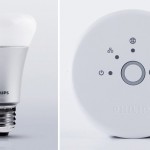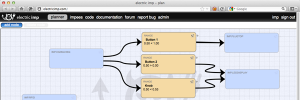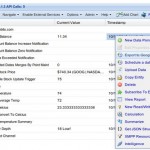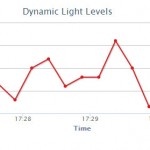The wireless lighting control market has seen a shift in recent years away from bespoke or proprietary lighting solutions, as efficient and low cost solutions have been introduced to the general market based around standards that you may already by familiar with – such as ZigBee – which provide opportunities for greater system standardisation and interoperability.
Whilst consumers increasingly recognise the value of the convenience, flexibility, and comfort that wireless, embedded “Internet-of-Things” devices bring to the home or office, a barrier to widespread adoption of these kinds of home automation systems in the past has been that traditionally, most product manufacturers have not provided a system that allows interoperability among different lighting and home automation vendors.
ZigBee Light Link was created to save time, money and installation labour by standardising simple, easy to install networks of intelligent lighting as well as control devices such as light switches, occupancy sensors, daylight sensors and Wi-Fi connected network gateways which allow the ZigBee Light Link network to be controlled by the consumer from a PC, tablet or smartphone.
As one of many ZigBee application profiles, ZigBee Light Link is a ZigBee application profile aimed at intelligent, wireless control of household lighting. It provides the lighting industry with a global standard for interoperable “smart” consumer lighting and control products that are easy to use, and it allows consumers to achieve wireless control over all their LED fixtures, light bulbs, timers, remotes and switches from their smartphone, PC or tablet. Products using the ZigBee Light Link standard allow consumers to configure their lighting remotely to reflect ambience, task or season, whilst at the same time improving energy efficiency.
The ZigBee Light Link 1.0 application profile is currently published, whilst the ZigBee Light Link 1.1 application profile specification is presently under development. Leading home lighting solution manufacturers who have contributed to the development of the ZigBee Light Link standard include GE, Greenwave, OSRAM Sylvania and Philips.
Products employing the ZigBee Light Link standard, and earning the ZigBee Certified seal, are known to the consumer to be interoperable and as easy to use as a common dimmer switch. Adding or removing devices from the lighting network is quick and easy, making it easy and intuitive for consumers to use every day. Since ZigBee Light Link is a ZigBee standard, ZigBee Light Link-based smart lighting solutions will interoperate effortlessly with consumers’ other devices employing ZigBee standards such as ZigBee Home Automation, ZigBee Input Device and ZigBee Remote Control.
A ZigBee Light Link network is a secure mesh network which allows communication to be safely relayed by multiple individual network nodes, i.e. control devices and lamps. A single light or group of lights can have the user’s favourite lighting state stored in memory and recalled immediately – even for a whole house worth of lights, at the press of a button.
Additional nodes can easily be added to or removed from the network without affecting system functionality or integrity. Adding or removing lamps is very easy and robust. Contrary to other networking solutions, it does not matter which lamp is installed first, or whether other lamps in the network are switched on or off. With ZigBee Light Link, adding a new lamp at a remote location is as easy as adding a new lamp within RF range.
Smartphones, tablets and PCs can control lighting products based on ZigBee Light Link via a ZigBee network gateway connected to ethernet or a Wi-Fi network. Such a connection also allows the ZigBee Light Link network to be controlled via the Internet, via web applications or mobile smartphone apps, for example.
Devices such as ZigBee-networked wireless wall switches and remote controls may also be used to control the lighting network. Functionality such as automatic timer control, “alarm clock” use, or “vacation mode” security use can also be defined in software and configured by the user with a simple software interface on the PC or mobile device.
The ZigBee Light Link profile can be used with ZigBee transceivers and ZigBee-ready system-on-chip microcontrollers from several semiconductor manufacturers – for example, the CC2531 or CC2538 IEEE 802.15.4/ZigBee System-on-Chip solutions from Texas Instruments.
Texas Instruments offers the Z-Stack Lighting Software for the CC2530 ZigBee-enabled RF system-on-chip, which is an implementation of ZigBee Light Link and comes with a sample demonstration program for both a wireless “smart light” and “smart switch”, allowing engineers to easily get started in the development of an easy to use lighting control solution based around ZigBee Light Link.
The Z-Stack Lighting development kit from Texas Instruments consists of two “Z-Light” reference design RGB LED lamps based around the CC2531 chip programmed as ZigBee Light Link Colour Lights and a CC2531-based USB gateway dongle programmed as a ZigBee Light Link Colour Scene Remote, which can be operated independently as a remote control with on-board buttons or used as a gateway to interface the lighting network to PC software, for software-based advanced control and functionality.
This development kit contains everything needed to set up a basic ZigBee Light Link network and control the lamps either individually or in groups using either buttons on the controller node or software on the PC. TI’s website contains tools and application examples for free download that can be used to experiment with more advanced features of the ZigBee Light Link lighting control protocol and to develop demonstrators for direct wireless control or control from cloud-based or web services. Schematics and documentation for these hardware reference designs are also fully provided for free download from TI.
Thus the information and hardware is available for you to integrate products into this new standard of wireless lighting control, and if this technology interests your organisation but don’t have the expertise in – or just need to have it taken care of by a team of experts – and you’re not sure how to progress with a reliable implementation, we can partner with you to take care of this either in revisions of existing products or as part of new designs.
With our experience in retail and commercial products we have the ability to target your product’s design to the required end-user market and all the steps required to make it happen.
We can create or tailor just about anything from a wireless temperature sensor to a complete Internet-enabled system for you – within your required time-frame and your budget. For more information or a confidential discussion about your ideas and how we can help bring them to life – click here to contact us, or telephone 1800 810 124.
LX is an award-winning electronics design company based in Sydney, Australia. LX services include full turnkey design, electronics, hardware, software and firmware design. LX specialises in embedded systems and wireless technologies design. https://lx-group.com.au
Published by LX Pty Ltd for itself and the LX Group of companies, including LX Design House, LX Solutions and LX Consulting, LX Innovations.

